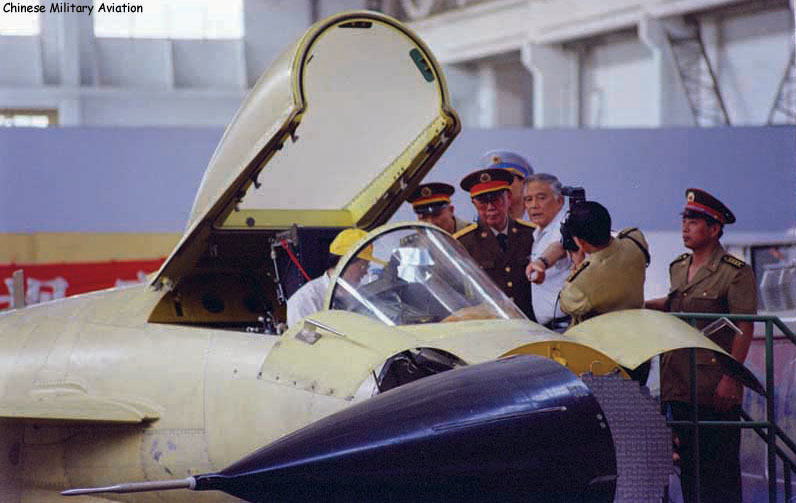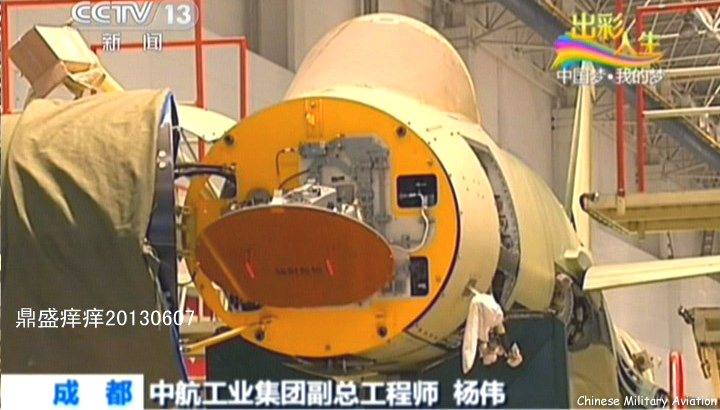From Henri K slowing down of J 10C production .He postulate maybe due to model change
Even he confirmed there is now 300 J10, J10A, J10S and 110 J10B&C. I think now China is concentrating on getting the strategic fighter J20, J11D and J15, J16 ramp up the production. So budgetary consideration while maintaining slow burn on J10C
Recent photos of a Chinese fighter
J-10C , registration # 2.54 (54th device that reads the batch 2), taken during a test flight in Chengdu told that these new variants modernized J-10 Have just crossed the bar of 100 devices produced.
And better, with 56 aircraft
J-10B and now 54 for the J-10C is a total of 110 jets that were manufactured for just over 3 years, at Factory 132 ACC AVIC Group. The appearance of this 54th J-10C would also mean the imminent end of the production of Batch 2, and thus the beginning of the next batch.
The 54th J-10C of the No. 2 production batch in Chengdu (Source: hdllmx)
We studied in August last year of CAC production capacity on the Chinese fighter program (see our article "
"), Using a method of calculation certainly craft, but accessible to the public. It is now time to extend the calculations to see what can be done.
As a reminder, this method consists of establishing a statistic on the first appearance of each new jet and the date of their photos taken by the Chinese spotters. Although these dates do not match those of assembly line output, which of course remain confidential, this gives us a rough idea about the number of J-10B and J-10C produced per month then per year .
It should be noted that there is a delay of about one to two months between the departure of a aircraft from the FAL (Final Assembly Line) and the first flight of the aircraft, as long as the aircraft are testing the ground . This discrepancy has not been taken into account in our calculation for the moment (but simply to simply shift the figures "to the left").
Thus, we get a series of monthly viewing since December 2013, of which one can identify which is the largest for each month that was highlighted in orange.
The J-10B and J-10C pictures that have been photographed by amateurs since December 2013 (Source: East Pendulum)
From this first table, we can estimate the number of aircraft produced per month, making a simple calculation of average between two registrations highlighted in orange, divided by the number of months separating them.
And the results calculated in this way are consistent with the figures provided by some Think Tanks in the United States - the CAC produces between 38 and 42 J-10B and J-10C jets each year. These data are also consistent with the production of the older versions J-10 and
J-10A .
Estimated production rates of the J-10B / C plant at 132 CAC Plant in Chengdu (Source: East Pendulum)
Assuming that our estimate is broadly representative, we are curious to see a gradual decline in production. Indeed, the annual production of J-10 and J-10C, according to this statistic, rose from 42 devices produced in 2014, 38 in 2015, to reach 26 in 2016, a decrease of 38%.
The monthly rate, shown by the red line in the last graph, is therefore reduced to 2 aircraft in 2016 compared with 3 in 2014 and 2015.
If this drop is real, we may naturally be led to believe that this is due to the production of J-20, which is currently underway in the same aircraft manufacturer. But the assembly line of
J-20 is completely apart (see our article "
") and there is no apparent reason, the industrial, which justifies Such an impact. Operationally, the Chinese military still needs a combination of a dual-reactor heavy fighter and a single-engine "light" fighter, to reduce the overall cost of operation. As the only single-engine program in China, the J-10 still has its role to play.
Three hypotheses are therefore possible in this case to explain the (temporary) decrease in production of J-10C -
- Or orders from the Air Force and the Chinese Navy drop for a matter of organization or budget,
- The supply chain for critical equipment such as the AL-31FN Series 3 and the AESA antenna radar,
- A major new version of J-10 is in preparation, a phenomenon that has already been observed between the end of production of J-10A and the beginning of D-10B between 2012 and 2014.
To date, we are looking more towards hypotheses 1 and 3 for several reasons. First, China has ordered no less than 260 AL-31FN Series 3 engines between 2011 and 2012, only dedicated to the production of J-10B and following. If we keep 25% of these engines in reserve, the CAC could still produce no less than 200 aircraft. And there is no evidence to date that ACC, which uses a market-oriented sourcing strategy, is losing control of its supply chain.
Operational level, we know that there is still a significant number of
J-7E ,
J-7L and
J-7G that were produced there are less than 20 years. These aircraft therefore remain operable in some missions of very low intensity, such as the patrol of the sky and the training of the pilots. The renewal pressure of aircraft for some regiments is much lower than a few years ago.
Finally, sources close to the AVIC group indicate that a new version, the
J-10D , is currently in development. The aircraft would be equipped with compliant tanks (CFT) and Chinese engine
WS-10 PE class 14 tons without a PC, all with enhanced avionics suite for active stealth, knowing that the avionics suite of J-10C is already aligned To the standard of the last Chinese fighter jets like the J-20.
One can see what this J-10D would look like on the official goodies offered by the ACC in 2012 -
Today, there are no less than 300 J-10, J-10A and J-10S jets of products, plus the 110 J-10B and J-10C manufactured to date, There is no doubt that the family J-10, a single engine tailor-made for the needs of the Chinese army, still has good days ahead of it.
To be continued.
Henri K.
Share this article


